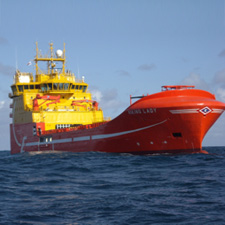
A new application of Molten Carbonate Fuel Cell (MCFC) has been developed by the European-funded MC WAP research project to be eventually used as an alternative power supply for ships. This will be cleaner and avoid the pollution of the marine diesel engines which currently provide the power in the vast majority of the world’s ships.
The research into molten carbonate fuel cells has it origins as early as the 1930s, Emil Baur and H.Preis in Switzerland experimented with high-temperature, solid oxide electrolytes. At the initial stages the research was applicable to both molten carbonate and solid oxide fuel cells which are both high-temperature devices. The technical history of both cells seems to follow a similar line of research. A divergence in the development appeared in the late 1950s. From then on, the Molten Carbonate Fuel Cell (MCFC) was developed from a purely experimental prototype to today’s practical demonstrator.
Molten carbonate fuel cells demand very high operating temperatures (600°C and above) and most applications for this kind of cell are limited to large, stationary power plants. The envisaged initial application is associated with waste heat, industrial processing, and in steam turbines to generate more electricity.
The MC WAP project has developed a molten carbon fuel cell which uses hydrogen obtained from a system that converts diesel oil into a hydrogen-rich gas, and air coming from the compressor of a microturbine. The reaction produces electricity and heat, without combustion.
To operate the MCFC on board a ship, researchers of the MC-WAP project have developed two major elements: The Fuel Processor Module and the Fuel Cells Module. The Fuel Cells Module is a chemical plant. It is fed from one side by compressed air and from the other side by a gas called syngas (produced from diesel) by the Fuel Processor Module. This gas is currently being tested in Germany, at the University of Freiberg. The chemical reaction between air and syngas then generates electricity.
The energy produced by the current system, corresponds to about 250 kilowatts, and represents one production unit of reserve energy that can power the essential systems on board, such as the control systems, communication, lighting and main auxiliary systems. Although at this time it will not power the propulsion, it will be able to contribute to it in some cases.
No combustion means fewer greenhouse gas emissions from the many tourist and cargo ships that carry the millions of people and goods around the coasts of Europe and the world. The cleaner ship exhausts are better for the environment and will help the operators to meet the new green legislation.
Cleaning the exhausts involves removing the traces of sulphur and carbon di-oxide that remain after normal combustion, resulting in clean exhaust gases. The system releases virtually no harmful substances: the fuel is transformed into synthetic gas which is then used in the fuel cell, without creating pollution. Furthermore the lack of moving parts in the MCFC will reduce the overall ship vibrations which will result in a more comfortable journey for the passengers.



